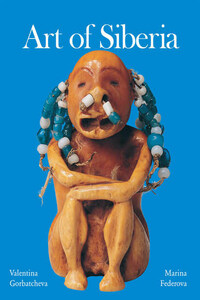Text: Maria Czaplicka,
Valentina Gorbatcheva,
Marina Federova
Layout:
Baseline Co Ltd,
61A – 63A Vo Van Tan St.
4>th Floor
District 3, Ho Chi Minh City
Vietnam
© Confidential Concepts, worldwide, USA
© Parkstone Press International, New York, USA
Image-Bar www.image-bar.com
All right reserved.
No parts of this publication may be reproduced or adapted without the permission of the copyright holder, throughout the world. Unless otherwise specified, copyright on the works reproduced lies with the respective photographers. Despite intensive research, it has not always been possible to establish copyright ownership. Where this is the case, we would appreciate notification.
* * *
The Evenki, the Yukaghirs, the Chukchi, the Koryaks, the Nenets, the Nanai people, the Yakuts, the Tuva people… Cradle of many cultures, Siberia constitutes an area that is rich in human traditions, as diverse and changeable over time as the region itself. The native inhabitants of Siberia, dwellers in the lands of far-northern and far-eastern Russia – by tradition reindeer-herders, horse-breeders, hunters of marine mammals and fishermen-hunters – have, over the millennia, evolved the means by which human communities may survive in this vast desert of extreme climatic conditions in northern Asia. Through their prolonged proximity to nature, the native inhabitants of the icy, Arctic expanses have learned to make a home in the wasteland, using every natural element at their disposal to create more than rude tents and campfires: they have become artists. The tribal cultures of Siberia express themselves in everything from the intricate designs on a walrus tusk, to the many-coloured glass beads on a woman’s dress, to the delicately carved child’s toy, to the ambiguously haunting shaman’s mask. In an environment in which utility and survival are everything, these rapidly disappearing communities release their artistic cry into the wilderness.
Unfortunately, colonization by incoming cultures has in many cases caused a significant decline in the fortunes of such groups. Confronted with the more destructive aspects of Russian expansion and the Industrial Revolution, both the indigenous cultures and their all-important environment are threatened. As reindeer and fish disappear and the native populations dwindle, we are losing the opportunity to observe these profoundly simple and diverse communities. Those with the fewest numbers today may yet witness for themselves the extinction of their ancestral cultures.
What follows is an overview of the relationship between Siberia’s extraordinary climate, the varied terrain and the peoples, along with a summary of the background from which those peoples stemmed, and accounts of historical events that dramatically altered their way of life. In the descriptions of shamanic principles, practices, and the essential role that the shaman plays in the daily lives of Siberian groups, we may glimpse the spiritual and artistic yearnings of these cultures. This book’s constant endeavour is to enable the reader to enter fully into the traditional world and shamanist mindset of the original inhabitants of ‘Russian’ Asia.
Swampy area in the region of Yakutsk.
I. Siberia: Geography and History
A. An Inhospitable Climate
“A country of intense cold and great heat. A country outwardly wretched, but hiding in its bosom incalculable treasure.”
Understood for almost three centuries to be no more than a geographical extension of the Russian state, Siberia stretches from the icy Arctic Ocean in the north to borders with Kazakhstan, Mongolia and China in the south, from the great chain of the Ural Mountains in the west to the Pacific Ocean in the east. Siberia lies (roughly) between the 45>th and 77>th parallels of north latitude, and extends from the 60° to the 190° of east longitude. Its most northern point is Cape Severo, or North-East Cape, a tongue of land between the estuaries of the great rivers Yenisey and Lena; Cape Vostotchni, its eastern extremity, is only forty-eight miles from Cape Prince of Wales in North America, from which it is separated by Bering Strait. Its greatest length from East to West is about 3,600 miles, and its greatest breadth from North to South a little less than 2,000 miles, forming an area which is 30 % larger than Europe.
Many Europeans think of Siberia as a huge wilderness, remote and hostile to human habitation, mostly iced over, darkened by the polar night for a good part of the year. And yet Siberia is nothing if not diverse. From north to south there are a number of large areas that are completely different from each other in climate, terrain, flora and fauna. As you move southward, the Arctic wastes gradually transform into the tundra with its permafrost; further south, the tundra in turn transforms into the slightly warmer zones where scrubby trees will grow; further south still is the evergreen coniferous forest of the taiga; continuing south, there are the fertile steppes and then the arid steppes – and all these various ecological areas come with their own topographical relief, from low-level flatlands to massively towering peaks.








